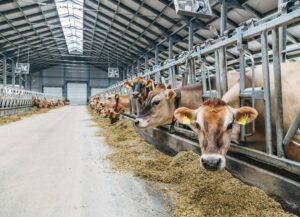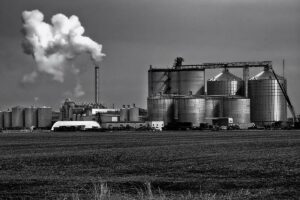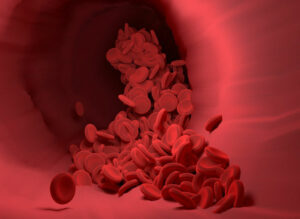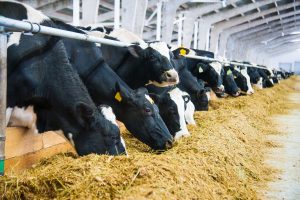Fernando Díaz
Silage was defined as the product formed when grass or other material of sufficiently high moisture content, liable to spoilage by aerobic microorganism, is stored aerobiologically.
Belgian researchers assessed the potential of four silage additives to improve fermentability and nutrient composition during the ensiling process of silages made with five different mixture ratios of ryegrass (Lolium multiflorum) and red clover (Trifolium pratense). The five forage blends were 100% ryegrass, 75% ryegrass: 25% red clover, 50% ryegrass: 50% red clover, 25% ryegrass: 75% red clover, and 100% red clover, on a fresh matter basis.
Dry-matter, protein, total solubles sugar, and fiber (NDF) contents in the fresh chopped forages were 20.7 and 20,6%, 12.5 and 20.4% DM, 19.0 and 10.0% DM, and 42.2 and 35.5% DM in ryegrass and red clover, respectively. The authors ensiled the forages in varying proportions in laboratory-scale silos made of vacuum-packed plastic bags including one of the following treatments:
- No additive (untreated).
- Sulphuric acid derivatives (1.7% DM).
- Chestnut tannin extract (0.8% DM).
- Oak tannin extract (1.0% DM).
- Zeolite (hydrated sodium calcium aluminosilicate, 100 g/kg DM).
After 34 days of ensiling, the authors opened the mini-silos and evaluated nutrient composition and fermentation parameters of the silages. The results were published in Grass and Forage Science (Herremans et al., 2019), and these were the main findings:
- Dry matter content was not affected by additive inclusion in the silages. Forage were very wet before and after ensiling. On average, DM content in the silages was 23.2%.
- When compared to the untreated silage (4.7), pH was reduced slightly by the addition of acid (4.4) and oak tannin (4.5). However, chestnut tannin and zeolite did not reduce pH significantly (4.8 and 4.6, respectively).
- Silage additives did not affect protein content in the fermented silages; however, they had a significant effect on the concentration of ammonia nitrogen. Comparing with the silage with no additive, the researchers observed a reduction in the proportion of ammonia in silages treated with zeolite (−13%), acid (−13%), and oak tannin (−10%). The chestnut tannin silage presented a proportion of ammonia nitrogen similar to the silage with no additive (1.9% DM).
- Total soluble sugar contents were higher in the silages with zeolite, chestnut and oak tannins (2.0, 2.1 and 2.6 % DM respectively) than in the untreated silage and the silage treated with acid (1.2 and 1.5% DM, respectively).
- Moreover, additive addition affected silage acid production. Silages treated with zeolite, chestnut and oak tannins showed less acid lactic (6.6% DM) and less acetic acid (1.1% DM) than the untreated silage (8.6 and 1.4% DM). Propionic acid was generally low (0.14% DM), and oak tannin was the only additive to significantly reduce its concentration (0.05% DM). In addition, acid and zeolite application reduced butyric acid concentration from 0.77% DM in the untreated silage to 0.34% DM.
- Interestingly, in vitro organic matter digestibility was reduced in the zeolite silage compared with the rest of the silages (0.69 vs. 0.74).
In conclusion, the effects of these additives on silage quality were very limited. Furthermore, according to this study, zeolite is detrimental as a silage additive since it decreased organic matter digestibility. Further research is required to study the effects of these additives in silages with longer fermentation periods and greater DM contents.
Reference
Sophie Herremans, Virginie Decruyenaere, Yves Beckers, Eric Froidmont. 2019. Silage additives to reduce protein degradation during ensiling and evaluation of in vitro ruminal nitrogen degradability. Grass Forage Sci. 74:86–96.









